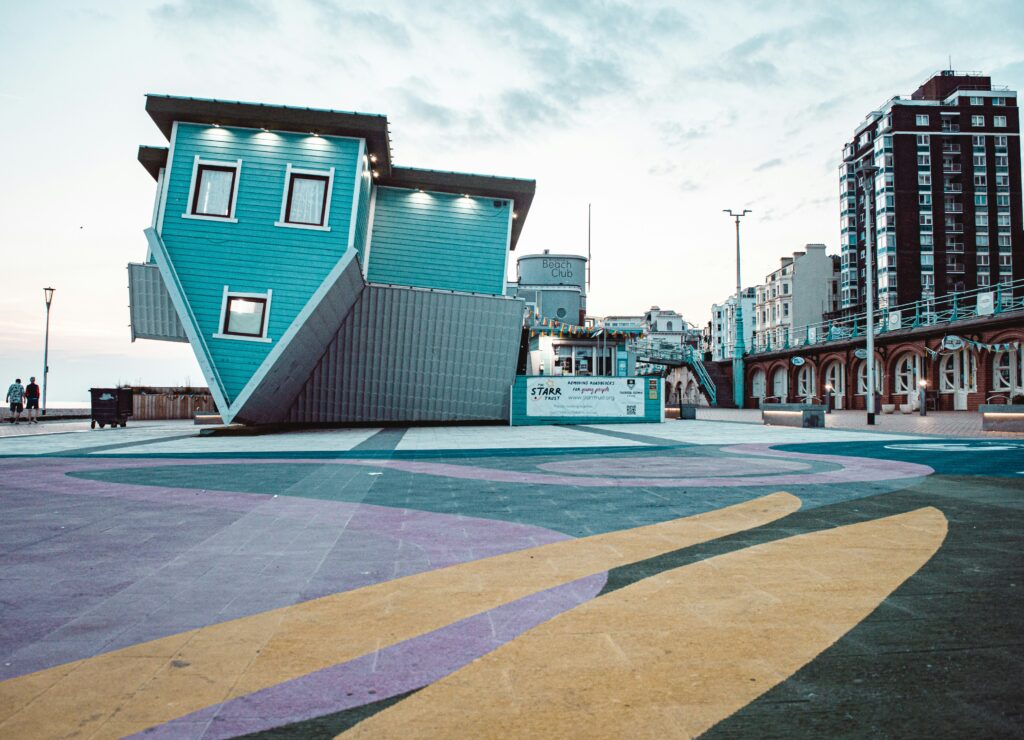How to Flip Houses for Profit

Imagine buying a run-down house, giving it a facelift, and selling it for tens of thousands more than you paid—all within a few months. That’s the magic of house flipping. It sounds easy, right? Reality check: it’s not.
House flipping is a high-stakes game that can make or break your finances. Do it right, and you could pocket $50,000+ per flip. Do it wrong, and you could lose your shirt before you even install the first cabinet.
So, how do you make sure your first flip is a success and not a financial disaster? Let’s break it down.
Finding the Right Property to Flip
Not every cheap house is a good flip. The key is to find properties that are undervalued but have the potential for a profitable turnaround.
The Sweet Spot is the “Ugly But Structurally Sound” Home. The best flips are homes that look terrible but have good bones—think: peeling paint, outdated kitchens, nasty carpets… but no major structural issues.
Example: A house built in 1990 that still has popcorn ceilings, shag carpet, and pink tile could be a goldmine if the layout and foundation are solid.
Where to Find Profitable Flips:
- Foreclosures & Auctions – Bank-owned homes often sell below market value.
- Off-Market Deals – Find motivated sellers before they list their homes.
- Distressed Properties – Look for homes that need cosmetic updates, not major repairs.
- Estate Sales – Heirs often want to sell quickly and may accept lower offers.
The golden rule of flipping? Buy low, renovate smart, and sell high.
The Renovation Game: What to Fix (and What NOT to Fix)
Once you lock in a great deal, the next step is renovation—but here’s where many new flippers go broke.
The Rule of Smart Renovations: Don’t turn a $250K home into a $500K mansion—you won’t get your money back.
Focus on high-impact, low-cost upgrades that buyers actually care about.
What to Fix for Maximum ROI:
- Kitchens & Bathrooms – Buyers want modern, clean spaces.
- Curb Appeal – A fresh coat of paint and landscaping go a long way.
- Flooring & Lighting – Ditch the old carpet, upgrade the lights.
- Open Layouts – Knocking down a non-load-bearing wall can add value.
What NOT to Waste Money On:
- Luxury Fixtures – No one needs a $5,000 Italian stove in a starter home.
- Over-the-Top Landscaping – A simple, clean yard is enough.
- Super-Specific Designs – Keep it neutral—not everyone loves bright green cabinets.
Pro Tip: Always renovate for the market you’re selling in. A $50,000 kitchen in a $200,000 neighborhood doesn’t make sense.
How to Finance a House Flip
Flipping isn’t just about buying and fixing—you need capital. Here’s how flippers finance their deals:
Option 1: All Cash (Best for High ROI)
If you have the cash, you avoid interest rates and loan fees, maximizing profit. But let’s be real—most people don’t have $200K sitting around.
Option 2: Hard Money Loans (Fast but Expensive)
Hard money lenders loan based on the property’s value, not your credit score. It’s fast but comes with high interest rates (8-15%).
Example: You buy a house for $150K, put in $30K of renovations, and sell for $250K. A hard money loan covers the purchase and repairs, but you’ll owe high interest if you don’t flip quickly.
Option 3: HELOC (Home Equity Line of Credit)
If you own a home, you can borrow against your home’s equity at lower rates.
Option 4: Partnerships (Using OPM – Other People’s Money)
Many flippers partner with investors—you find the deal, they provide the money, and you split the profits.
The Biggest Mistakes New Flippers Make
Flipping homes isn’t just about buying low and selling high—it’s a game of timing, budgeting, and execution. And for first-time flippers, mistakes can be financially devastating.
Here’s where most new flippers go wrong—and what it actually costs them.
Underestimating Renovation Costs
It starts with a simple miscalculation. You walk into a house and think, “This kitchen remodel will cost $10,000, maybe $15,000 max.”
Wrong.
In reality, renovation costs almost always exceed expectations. Why?
- Labor costs fluctuate—skilled contractors aren’t cheap, and prices vary by region.
- Materials add up fast—that $3.99/sq. ft. flooring you budgeted for? Turns out you need extra for waste cuts, adhesives, and underlayment.
- Surprise expenses appear—you tear down a wall, only to find outdated electrical that isn’t up to code.
What It Actually Costs
- Full kitchen remodel: $25,000–$50,000 (even with mid-range materials)
- Bathroom renovation: $10,000–$20,000
- New flooring (whole house): $8,000–$15,000
- New roof: $10,000–$25,000
- Exterior paint: $4,000–$10,000
Example: Sarah, a first-time flipper, thought she could completely renovate a 1,500 sq. ft. home for $40,000. The final cost? $68,000. Her profit margin shrunk dramatically, all because she underestimated material and labor costs.
Holding Too Long: The Silent Profit Killer
Time is your worst enemy in house flipping. Every extra month you hold a property costs you money in:
- Loan interest – Hard money loans can charge 12-15% interest annually.
- Property taxes – Some areas have sky-high tax rates that add thousands to holding costs.
- Utilities & Insurance – Even a vacant home needs electricity, water, and homeowner’s insurance.
What does it actually cost?
Let’s say you finance a flip with a hard money loan:
- Purchase Price: $250,000
- Loan Amount: $200,000 (80% of purchase price)
- Interest Rate: 12%
- Monthly Interest Payment: $2,000
Now, add property taxes ($500/month), utilities ($150/month), and insurance ($200/month)—you’re looking at $2,850 in carrying costs every month.
Example: James bought a fixer-upper, planning to flip it in 4 months. But due to contractor delays and permit issues, it took 8 months to sell. That’s $11,400 in extra holding costs—eating deep into his profits.
Over-Improving: Making a Mansion in the Wrong Neighborhood
It’s easy to fall in love with renovations. You picture quartz countertops, custom cabinets, a spa-like master bath. But before you splurge, ask yourself:
Does this house actually belong in a luxury market?
Upgrading a starter home in a first-time buyer’s neighborhood with $50,000 in high-end finishes doesn’t increase value—it just shrinks your profit margin.
What It Actually Costs
- Luxury kitchen in a mid-tier neighborhood? You might get $0 back on that extra $20K.
- High-end landscaping? Buyers might love it, but they won’t pay extra for it.
- Smart home tech? Nice, but not necessary—especially in a budget-friendly market.
Example: Lisa flipped a $300,000 house in a neighborhood where homes sold for $325K max. She put in $75,000 of upgrades, thinking it would sell for $400K. Reality? No one wanted to overpay for a “luxury home” in a middle-class area. She ended up selling for $320,000, barely breaking even.
Ignoring Permits & Inspections: The Cost of Cutting Corners
Skipping permits might save time upfront, but it can kill your flip when it’s time to sell.
When buyers request an inspection, unpermitted work can:
- Fail to meet code, requiring expensive fixes before closing.
- Scare away buyers, especially if they need financing (lenders don’t like unpermitted work).
- Trigger fines from the city, delaying your sale even longer.
What It Actually Costs
- Permit for electrical work: $500–$2,000
- Permit for major remodel: $1,000–$5,000
- Fixing unpermitted work after inspection issues: $10,000+
Example: David added a new bedroom and bathroom to a flip without permits. When buyers hired an inspector, the city forced him to rip out drywall, redo wiring, and pull permits retroactively. It delayed the sale by 4 months and cost him $18,000.
Final Thoughts: Flipping is a Business, Not a Hobby
Most first-time flippers fail because they think flipping is easy money. The reality? It’s a calculated business decision that requires research, budgeting, and knowing when to walk away.
Successful flippers know their numbers, plan for delays, and never over-improve.
Amateur flippers underestimate costs, hold too long, and cut corners—often leading to losses.
Bottom Line: The best way to succeed in flipping? Learn from the mistakes of others—so you don’t have to pay for them yourself.
